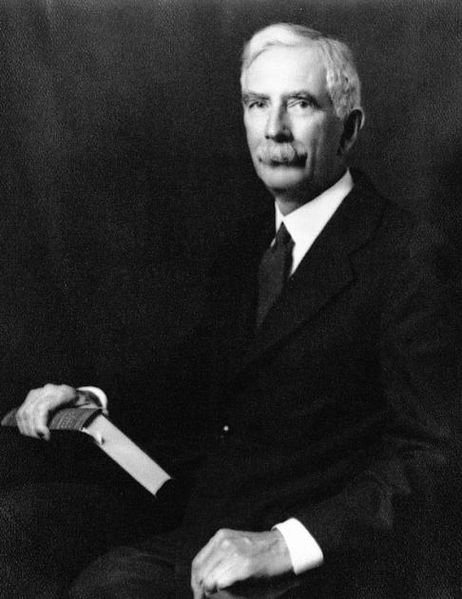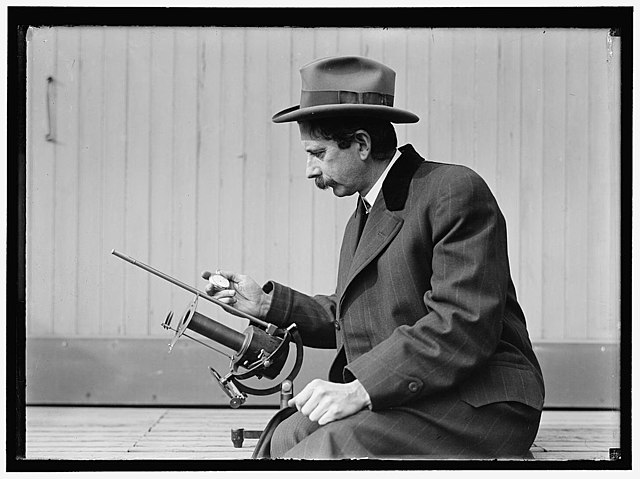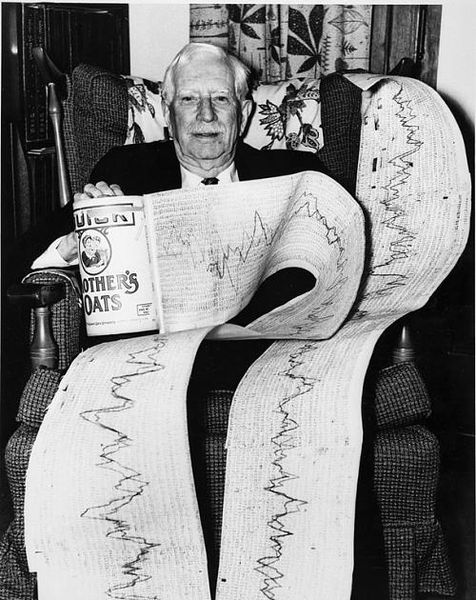Charles Greeley Abbot was an American astrophysicist and the fifth secretary of the Smithsonian Institution, serving from 1928 until 1944. Abbot went from being director of the Smithsonian Astrophysical Observatory, to becoming Assistant Secretary, and then Secretary of the Smithsonian Institution over the course of his career. As an astrophysicist, he researched the solar constant, research that led him to invent the solar cooker, solar boiler, solar still, and other patented solar energy inventions.
Dr. Charles Greeley Abbot
Abbot, at age eleven, with the water wheel he invented.
Charles Greeley Abbot, between 1913 and 1917
Abbot with a container full of printouts of solar observations, 1968
Smithsonian Astrophysical Observatory
The Smithsonian Astrophysical Observatory (SAO) is a research institute of the Smithsonian Institution, concentrating on astrophysical studies including galactic and extragalactic astronomy, cosmology, solar, earth and planetary sciences, theory and instrumentation, using observations at wavelengths from the highest energy gamma rays to the radio, along with gravitational waves. Established in Washington, D.C., in 1890, the SAO moved its headquarters in 1955 to Cambridge, Massachusetts, where its research is a collaboration with the Harvard College Observatory (HCO) and the Harvard University Department of Astronomy. In 1973, the Smithsonian and Harvard formalized the collaboration as the Center for Astrophysics | Harvard & Smithsonian (CfA) under a single Director.
The Center for Astrophysics | Harvard & Smithsonian (CfA) Headquarters in Cambridge, Massachusetts. The Smithsonian Astrophysical Observatory (SAO) has been joined with the CfA since 1973.
The first image of the photon ring of a black hole (M87*), captured by the Event Horizon Telescope. SAO plays a central role in the project.






